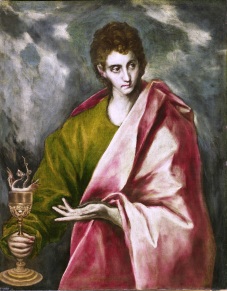Question with boldness even the existence of a God; because, if there be one, he must more approve the homage of reason, than that of blindfolded fear.
Thomas Jefferson wrote this in a famous letter to his nephew, Peter Carr. So how did this unorthodox Christian react when his daughter Patsy decided that she wanted to become a nun? Nobody really knows, except that he quickly snatched Patsy and her sister Polly out of Pentemont Abbey, the Parisian convent school where they’d been studying.

Pentemont Abbey, 1898
I play with this episode in my in my award-winning new play The Shackles of Liberty. When Patsy first broaches the subject with her father, he quizzes her about the nature of God …
THOMAS: Tell me—where is God? Where does he live?
PATSY: He is everywhere.
THOMAS: So I can reach out and touch him?
PATSY: No.
THOMAS: Why not? Of what stuff is he made?
PATSY: No stuff at all, Father.
THOMAS: So he is everywhere and yet comprised of nothing. He has infinite height, width, and depth, and yet none at all—a dimensionless geometrical point.
It’s an absurd proposition as far as Thomas is concerned. And yet he is no atheist. He agrees with the teaching of Jesus, that God is a spirit …
He knew that spirit is material and real. Thin and light, an ethereal gas perhaps, subtler than our gross bodies, but material nonetheless. I don’t know where to look for such spirit, but that’s of small concern. God’s existence is manifest in the infinite beauty of natural design—from the growth of the flower to the precession of the equinoxes. He is Cause Perpetual, Cause Everlasting.
As Patsy confides to Sally Hemings later in the play, she pretty much agrees with her father. In the convent, Patsy can feel God’s palpable presence …
Father’s right, God is made out of matter, and there you can feel him. You can touch him. You can touch his face. And his face is so gentle. And he’s so full of love. Everybody there feels it. And everybody wants to do his will. They want to love him back. It’s all they ever do. I’ve never been any place like it.

Yoruba Veranda Post, Brooklyn Museum
What does God mean to Sally, a third-generation slave? Much of the profound theology of Sally’s Yoruba ancestors has been lost to her. But she’s still deeply aware of ashe, the life force underlying all of creation, the spiritual power to make things happen …
I was really little when my nephew Andy was born. Still I had to take care of him best I could whenever my sister was working somewhere else, which was lots of the time, sometimes far away, stitching, cooking, stirring the lye pot boiling, but whenever little Andy began to whimpering, not even really crying, she’d be back on the spot, ready to feed him. Now how’d she always know he was hungry? She said it was ’cause she’d feel ashe moving inside of her, and ashe was what he was hungering for.… Ashe—it’s something everybody’s got moving inside, but you’ve got to keep giving it everywhere to everybody, sharing it always.
As a devout Catholic, Thomas’s European lover Maria Cosway fully accepts the message of John the Evangelist that God is love. But her belief is not as comfortable (or comforting) as one might expect. When Thomas begins to raise an age-old question, she fiercely interrupts him …
John the Evangelist, El Greco
THOMAS: How can a loving God—?
MARIA: Oh, the old, old question always, and so foolish! Permit of evil? Allow there should be pain, and cruelty, and sickness, the death of your Martha? Listen to what I say, Thomas. He is not a loving God. He is Love. And if you do not understand God, it is for that you do not understand Love. There is nothing—nothing—in the world, or the heaven, or the hell—more—implacabile, more—more terrible or—cruel than Love. There is not justice, there is nothing kind or gentle in Love, none. Love kills all dream of perfection, every hope we have. It is the hardest, coldest thing of all there is.
(The Shackles of Liberty is the winner this year’s Southern Playwrights Competition, sponsored by Jacksonville State University.)


